Spring mania
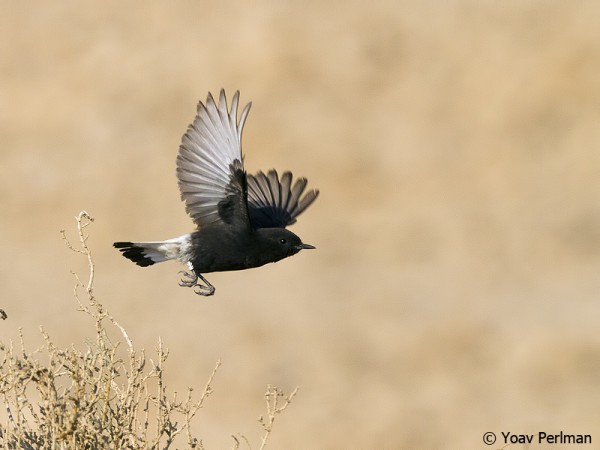
Yoav Perlman shares his exciting spring migration experiences from southern Israel
Israel is world-famous for the huge volume and variety of migration, as entire populations flying between Eurasia and Africe funnel through the country twice a year. This amazing phenomenon is what makes Israel so great for birding, and as a young birder I grew up into this spectacle. Migration is visible anywhere around the country, but spring migration in southern Israel tops the cake. Huge numbers of migrants occupy every green spot in the desert, be it an agricultural field, city garden or sewage farm.
Spannish Sparrow flock feeding in a wheat field near Yotvata, southern Israel
Overhead, enormous thermals (or kettles if you’re American) of raptors rise from the mountains and head north in great speed. My biggest day this year was with about 100,000 Steppe buzzards! At the same time, our desert species, adapted to live in the harsh desert conditions, enjoy the little germination and flowering of desert bushes to produce another generation.
Bonelli’s Eagle soaring over a canyon above the Dead Sea, Israel
European birders have been traditionally visiting Eilat in spring for many years now, enjoying both the spectacle of migration and a variety of species rarely seen in western Europe. But since 2007, the main birding event of the spring is the Eilat Bird Festival – this outstanding event attracts many birders from all around the world and from Israel, and gets them together for a week full of field trips: day and night, short and long, for the amateur and for the hardcore. Together with evening programs this is a great event. I have been guiding for the Festival since it started, and I am very pleased to see it grow from year to year. Every year we are joined by some celebrity birders and bird-writers, and this year we were pleased to host my co-birdblogger Martin Garner.
This year, spring migration was even more powerful that normal. Not only our guests but also myself and the other guides just could not get enough. Birding was so rapid and so much fun, and while being out birding it was sometimes hard to keep up with the speed of new birds popping up every second. I just did not know what to look at first. Numbers of common migrants were phenomenal, in volumes we haven’t experienced in Israel for many years. Every tree, bush, garden, city roundabout and field were just packed full with birds – warblers, wheatears, pipits, buntings, shrikes.
Rueppell’s Warbler singing from a Capparis decidua bush at Eilat, Israel
The most impressive show in March was given by wheatears – they were just everywhere in huge numbers. Two species that are normally rare vagrants to Israel – Cyprus Wheatear and Pied Wheatear, showed in hundreds! I will never look at a Pied Wheatear the same way again…
Cyprus Wheatear in the southern Arava Valley, Israel
Pied Wheatear of the rare white-throated morph ‘vittata‘ in a date plantation near Eilat, southern Israel
One of the most exciting birds found during the Festival was a Basalt Wheatear, in the Uvda Valley of the southern Negev. This valley normally attracts large numbers of larks and sandgrouse feeding on seeds in dry wadis. This beautiful wheatear spent a couple of weeks in a small bunch of bushes, and showed well to its many admirers. This very distinctive taxa / morph / form / whatever is probably a cryptic species, that stayed under the radar of ornithologists for some hundreds of years. It is currently lumped with Mourning Wheatear, but it so different in all aspects – morphology, vocalisation, migration ecology etc. It just has to be a different species. It breeds in the remote basalt desert of northern Jordan and southern Syria, and its wintering grounds are not fully known – it’s a rare winter visitor to southern Israel and Egypt. I trapped it together with Hadoram Shirihai, who’s working on this issue at the moment. We took DNA samples from this bird, and hopefully this new data will shed some more light on the taxonomy of this bird.
Basalt Wheatear taking off at Uvda Valley, southern Israel
In April, massive migration continued with unbelievable waves of Blackcaps and Lesser Whitethroats – tens of millions I guess. They were accompanied by enormous numbers of Ortolan Buntings, Tree pipits and many others.
Ortolan Bunting in the northern Negev, Israel
Massive migration should continue until mid May, with Blackcap, Thrush Nightingale, bee-eaters and shorebirds expected to arrive in the largest numbers. Then things should slow down a bit for a short period – in late June we receive the first returning migrants, heading south…
Blue-cheeked Bee-eater in the Arava Valley, southern Israel
I suppose you’ve noticed how many times in this post I used the words huge, massive, enormous, spectacular – well it was spectacular indeed. More to come.

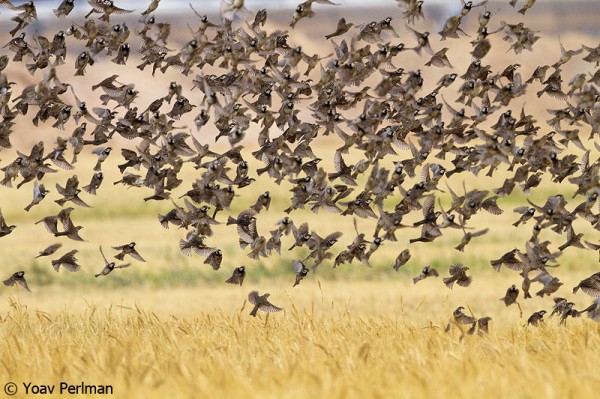
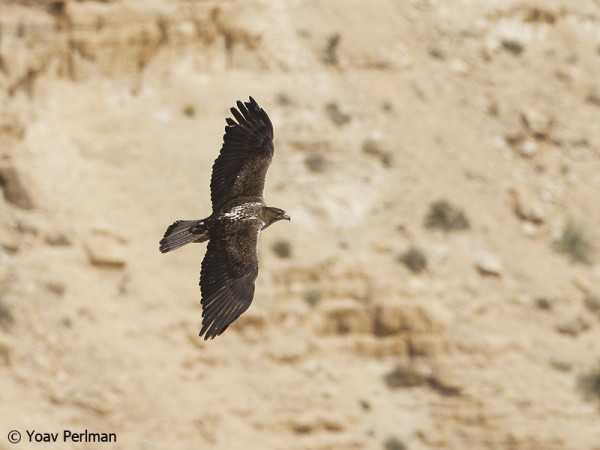
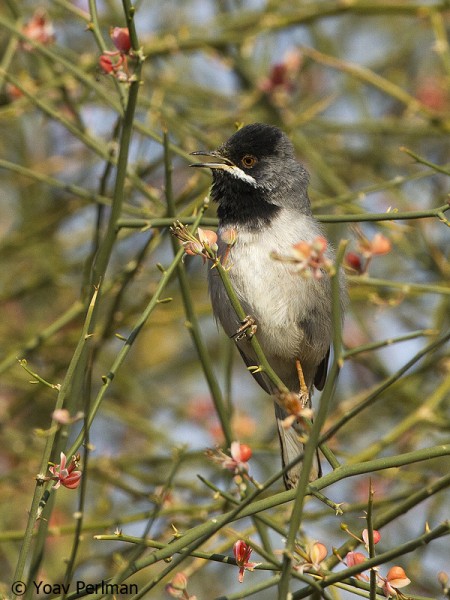
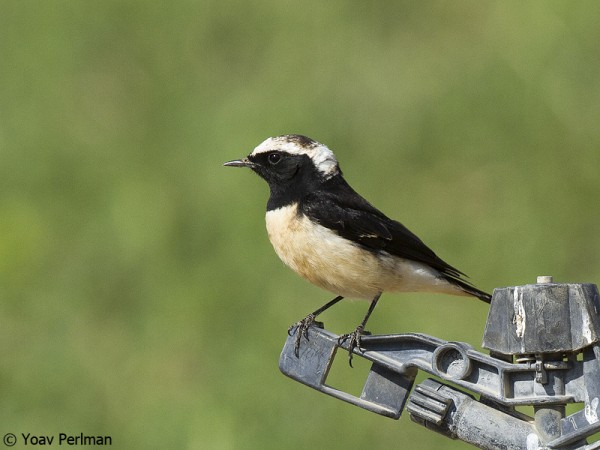
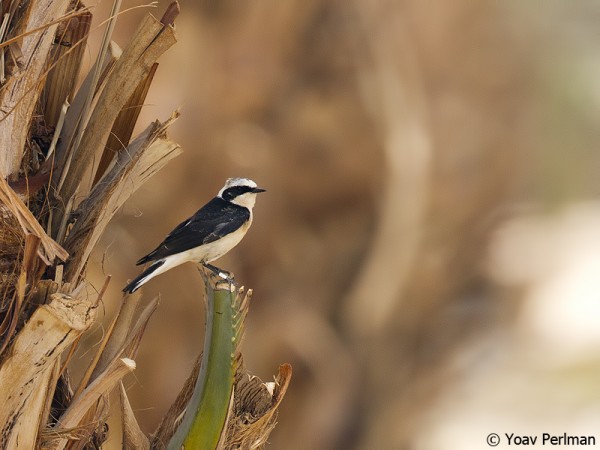
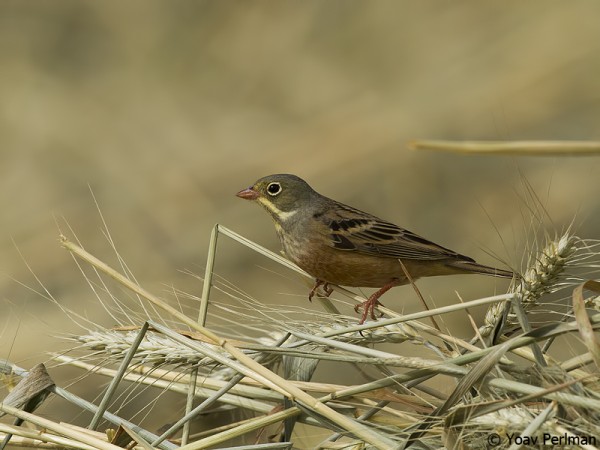
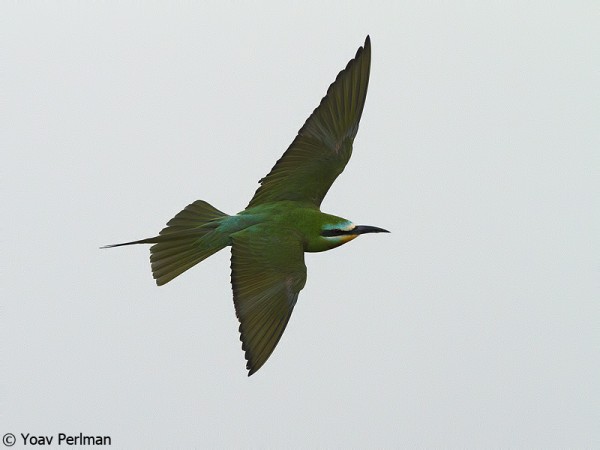
Love your blogs Yoav
Jude